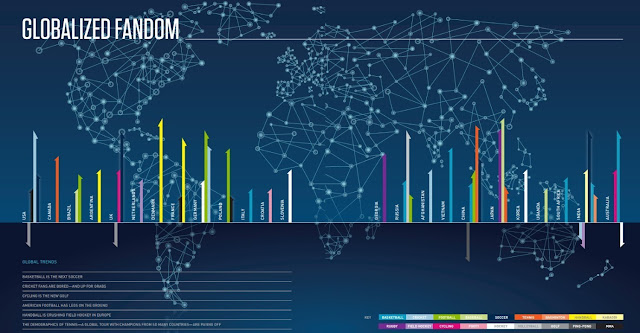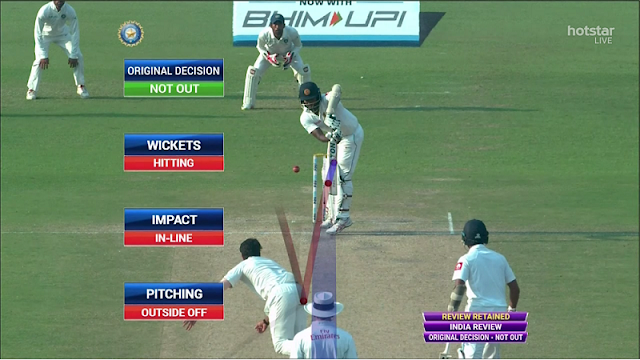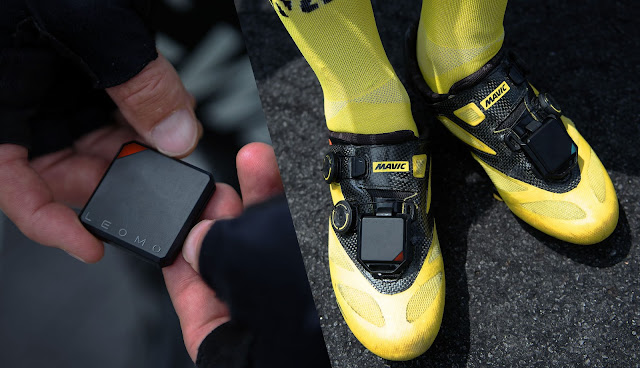Technology in Sports
February 16, 2018
In recent years, technology has had a huge impact on almost every aspect of our life. The world of sports is continually changing over the years, and the use of technology is just one of those areas that has made an impact on many sports in the modern day. Recent developments in sporting technologies have created a variety of products aimed at improving and increasing athletic performance. The health and well-being of performers can be maintained and observed, and injuries treated, through the production of technologies such as heart rate monitors, pedometers and body-fat monitors. Modern sporting technologies have also made officiating easier and more accurate, and spectator interest and excitement is enhanced by broadcasting and in-stadium displays or scoreboards. Here are some of the technologies used in sports.
Hawk-Eye Technology
Hawk-Eye is a complex computer system used officially in numerous sports such as cricket, tennis, badminton, Rugby Union and volleyball, to visually track the trajectory of the ball and display a record of its statistically most likely path as a moving image.
All Hawk-Eye systems are based on the principles of triangulation using the visual images and timing data provided by a number of high-speed video cameras located at different locations and angles around the area of play. For tennis there are ten cameras. The system rapidly processes the video feeds by a high-speed camera and ball tracker. A data store contains a predefined model of the playing area and includes data on the rules of the game.
In each frame sent from each camera, the system identifies the group of pixels which corresponds to the image of the ball. It then calculates for each frame the 3D position of the ball by comparing its position on at least two of the physically separate cameras at the same instant in time. A succession of frames builds up a record of the path along which the ball has travelled. It also "predicts" the future flight path of the ball and where it will interact with any of the playing area features already programmed into the database. The system can also interpret these interactions to decide infringements of the rules of the game.
The system generates a graphic image of the ball path and playing area, which means that information can be provided to judges; television viewers or coaching staff in near real-time. The pure tracking system is combined with a back end database and archiving capabilities so that it is possible to extract and analyze trends and statistics about individual players, games, ball-to-ball comparisons, etc.
Goal-line technology is used in football. It is a method used to determine when the ball has completely crossed the goal line in between the goal-posts and underneath the crossbar with the assistance of electronic devices and at the same time assisting the referee in awarding a goal or not. The objective of goal-line technology (GLT) is not to replace the role of the officials, but rather to support them in their decision-making. The GLT must provide a clear indication as to whether the ball has fully crossed the line, and this information will serve to assist the referee in making his final decision.
Compared to similar technology in other sports, goal-line technology is a relatively recent addition to association football; its integration having been opposed by the sport's authorities. In July 2012, the International Football Association Board (IFAB) officially approved the use of goal line technology, amending the Laws of the Game to permit (but not require) its use. Due to its expense, goal-line technology is only used at the highest levels of the game. Goal-line technology is currently used in the top European domestic leagues, and at major international competitions.
Cycling used to be very much a sport of feel and arbitrary judgment, riding a certain distance or climbing up a particular hill so many times was enough to prepare people for a race. Along came heart rate monitors and people could train within particular heart rate zones, but this was still only analyzing what the effort was doing to the body, rather than what the effort was doing for the actual performance.
When power meters came along, it allowed cyclists to train in accordance with how much power they were pushing through the pedals. Having the ability to train at a consistent level with the readings appearing on a screen in the handlebars meant that consistent power could be achieved.
Similarly, we can see the use of GPS sensors that have allowed rugby, football and soccer coaches to see exactly where a player is at any point during a match, then look at their movements and see how these can be changed to improve the athlete. By placing small, unobtrusive sensors into the clothing athletes wear while training, he or she can quantify not only heart rate and respiration but also muscle activity and exertion. With this information, athletes and coaches can identify areas for improvement. For example, changes in altitude can have a significant impact on aerobic capacity. Targeted training focused on increasing lung capacity can help mitigate the impact altitude will have. Soft, comfortable sensors embedded into the torso of a runner’s singlet can gauge volume of oxygen, max levels for the athlete and measure increases as a result of proper training. Accelerometers and conductive materials embedded into compression shirts and shorts can also measure posture and provide real-time feedback to athletes so they can perfect their form. It’s one thing for a coach to provide verbal feedback to an athlete; it’s something else entirely for the athlete to see themselves projected in real time against an ideal silhouette executing the same move. In these ways and more, adding sensors to sports environments will continue to revolutionize the way athletes train and compete.
These kinds of sensors are also constantly evolving and getting smaller, making even more impact on performance whilst being able to pick up the minutest information. It has been predicted that soon they will be embeddable within everyday clothing, allowing for complex measurements to be taken constantly and improving analysis even further.
Aero and Hydrodynamics
In a vast majority of sports, such as rowing, cycling, speed skating and swimming, athletes deliver power to overcome drag from air and water. Optimizations in aerodynamics and hydrodynamics can reduce this drag up to 5 percent, making this a major opportunity to improve an athlete’s performance. Moreover, analysis of currents and the development of flow models are determining factors in sailing, kite surfing, but also other areas such as the climate control in of sports facilities, and maintaining water quality in swimming pools.
In competitive swimming, every moment is important and counted. Professional swimmers attempt to utilize every possible legal means to enhance their performance. Using modern swimsuits, swimmers endeavor to reduce hydrodynamic drag thereby get competitive advantage. However, the hydrodynamic contribution of the swimsuits is not well studied and fully understood. The primary objective of this work is to the study aero/hydrodynamic behavior of a range of commercial swimsuits. Both aero/hydrodynamic and microscopic measurements were undertaken. The analyzed data indicate that the swimsuit surface structure has significant effect on aero/hydrodynamic properties especially on drag.
Sports Analytics
Sports analytics are a collection of relevant, historical, statistics that when properly applied can provide a competitive advantage to a team or individual. Through the collection and analyzation of these data, sports analytics inform players, coaches and other staff in order to facilitate decision making both during and prior to sporting events.
There are two key aspects of sports analytics - on-field and off-field analytics. On-field analytics deals with improving the on-field performance of teams and players. It digs deep into aspects such as game tactics and player fitness. Off-field analytics deals with the business side of sports. Off-field analytics focuses on helping a sport organization or body surface patterns and insights through data that would help increase ticket and merchandise sales, improve fan engagement, etc. Off-field analytics essentially uses data to help rights holders take better decisions that would lead to higher growth and increased profitability.
As technology has advanced over the last number of year’s data collection has become more in-depth and can be conducted with relative ease. Advancements in data collection have allowed for sports analytics to grow as well, leading to the development of advanced statistics as well sport specific technologies that allow for things like game simulations to be conducted by teams prior to play, improve fan acquisition and marketing strategies, and even understand the impact of sponsorship on each team as well as its fans.
A new innovation that has emerged in the past few years is virtual reality (VR). When people think of virtual reality, more often than not, it is equated to a video game, but it really is about capturing very intense, realistic moments. VR headsets allow the user to be immersed in a realistic, interactive 3D world. VR has found a practical application in sports, essentially allowing players to receive realistic, repetitive training by visualizing on-field scenarios—without the risk of injury.
StriVR, a VR company that creates 360-degree training videos shot from a player’s point-of-view. What virtual reality brings to the table – especially in STriVR Labs’ case, using actual players and playbooks – is the ability to let athletes practice without stepping on the field. Teams may only be allowed to have four sessions with live tackling and blocking, but with virtual reality, a player can step on the field and practice running routes with a full-padded defender charging their weak side. And what’s more advantageous, really, than being able to take practice repetitions against your upcoming opponent’s offense? While coaches can’t incorporate an opponent’s actual film, they can employ the opponent’s offensive strategy by way of their own players as they prepare for a game.
Halo Neuroscience has developed a headset that boosts your workout by stimulating your brain. The Halo Sport headphones, as they’re called, are designed to prime your brain for exercise.
The process is called “neuropriming,” and it involves using gentle electrical pulses to encourage the brain to form new pathways — thereby making training more effective. Sending targeted signals to the brain boosts motor unit recruitment, meaning it helps the brain activate more muscle fibers. Increased muscle fiber activation shows in increased muscle performance.
When a neuropriming session is paired with athletic training, the brain is primed to more quickly generate and strengthen neural pathways this phenomenon is known as hyper plasticity. The brain retains information more rapidly in a hyperplasic state, which means increased strength and skill retention with training.
Electrical brain stimulation might be new to sport but is used to treat many different medical conditions, including chronic pain, Parkinson’s, and epilepsy. Athletes wear the device during warm-up routines, inducing a plastic brain state that lasts about an hour into their workout. When an athlete performs an exercise in that state, the brain more easily builds connections between the motor cortex and the muscles involved in that exercise. Better connections improve control and the ability to recruit more muscle fibers at the same time, extracting more of the raw strength from a muscle.













1 comments
Nice post and good to see the technologies been used in sports. Thanks for sharing this informative blog and you can also check top ar vr companies in india
ReplyDelete